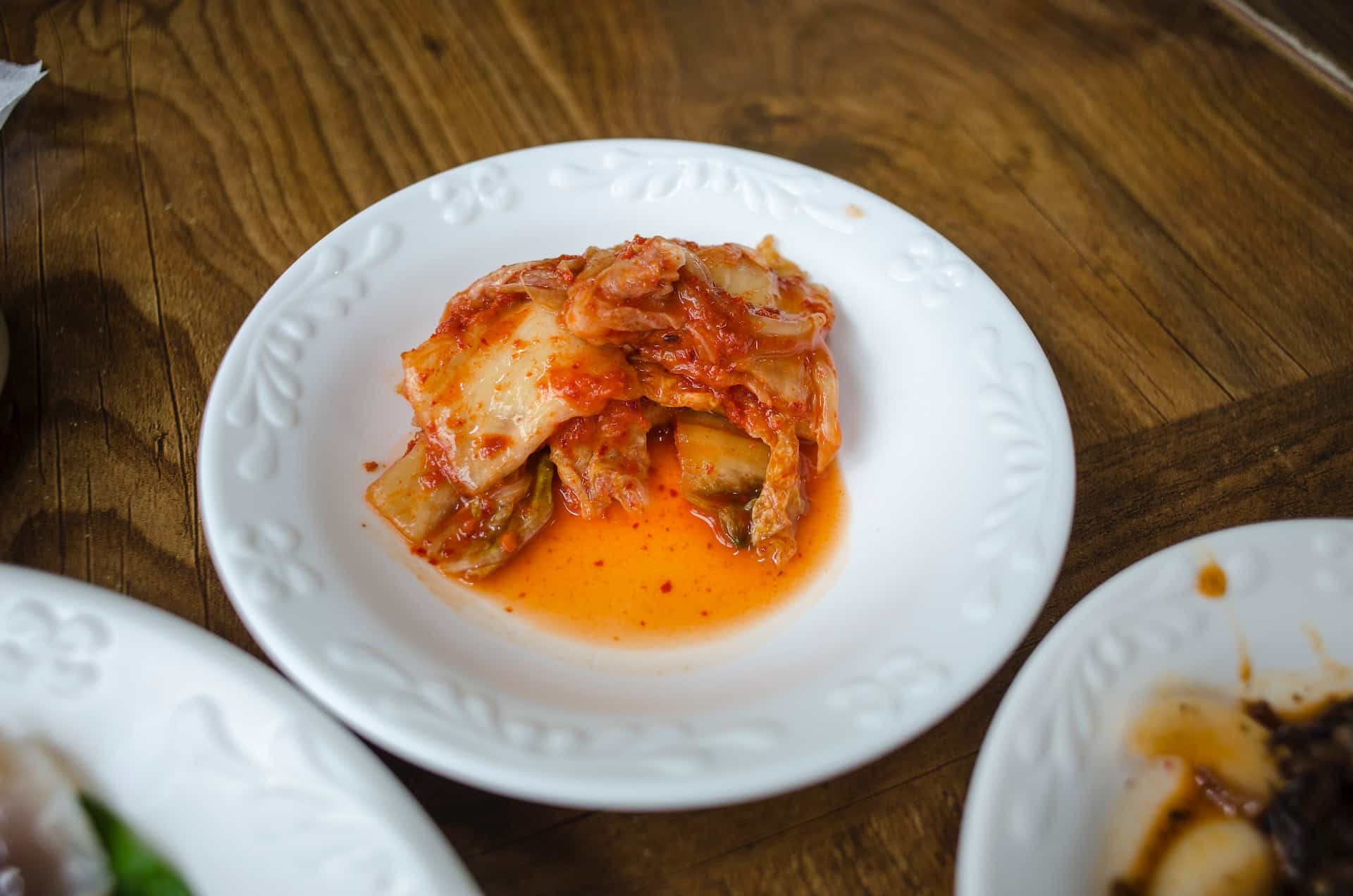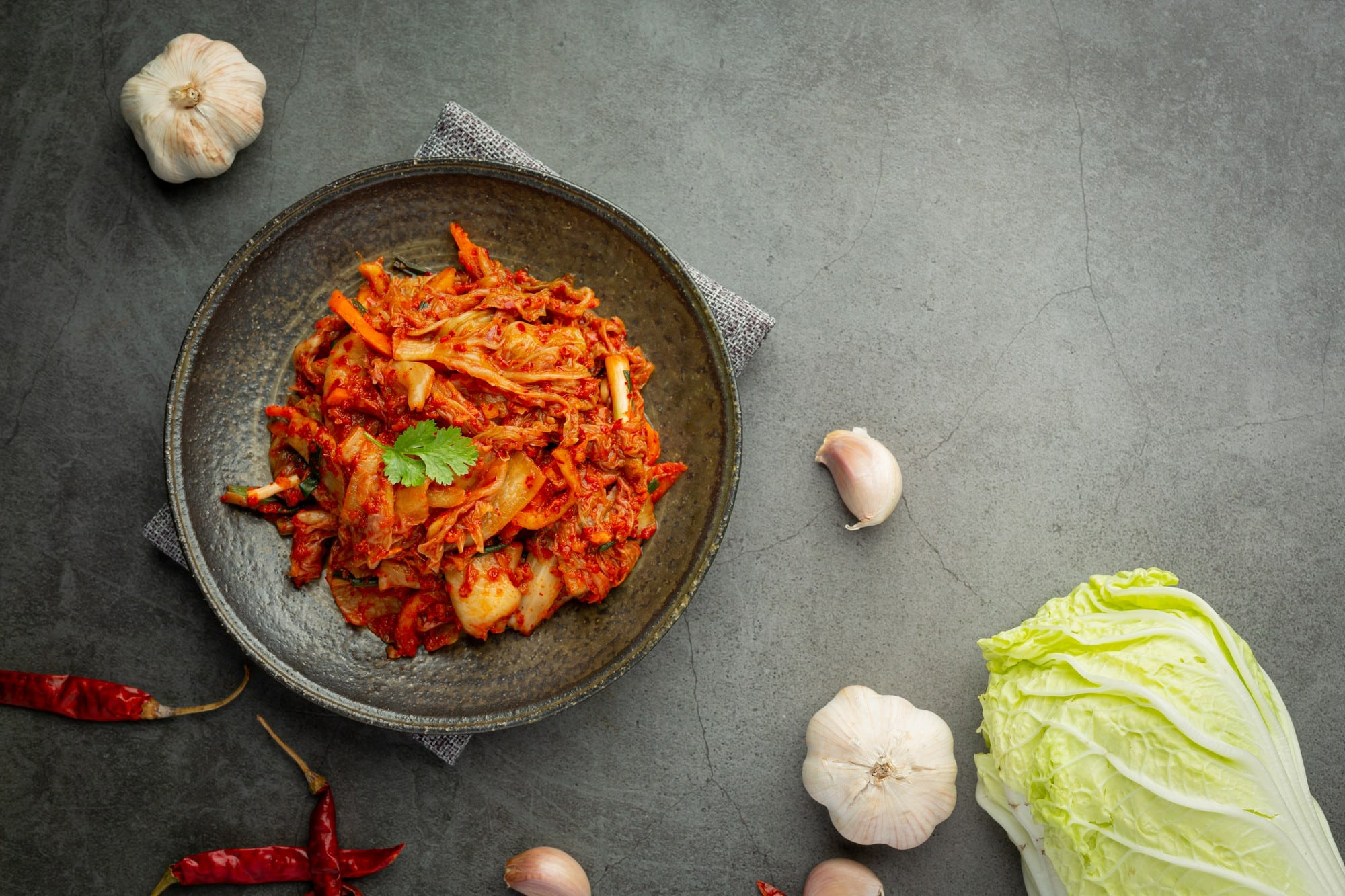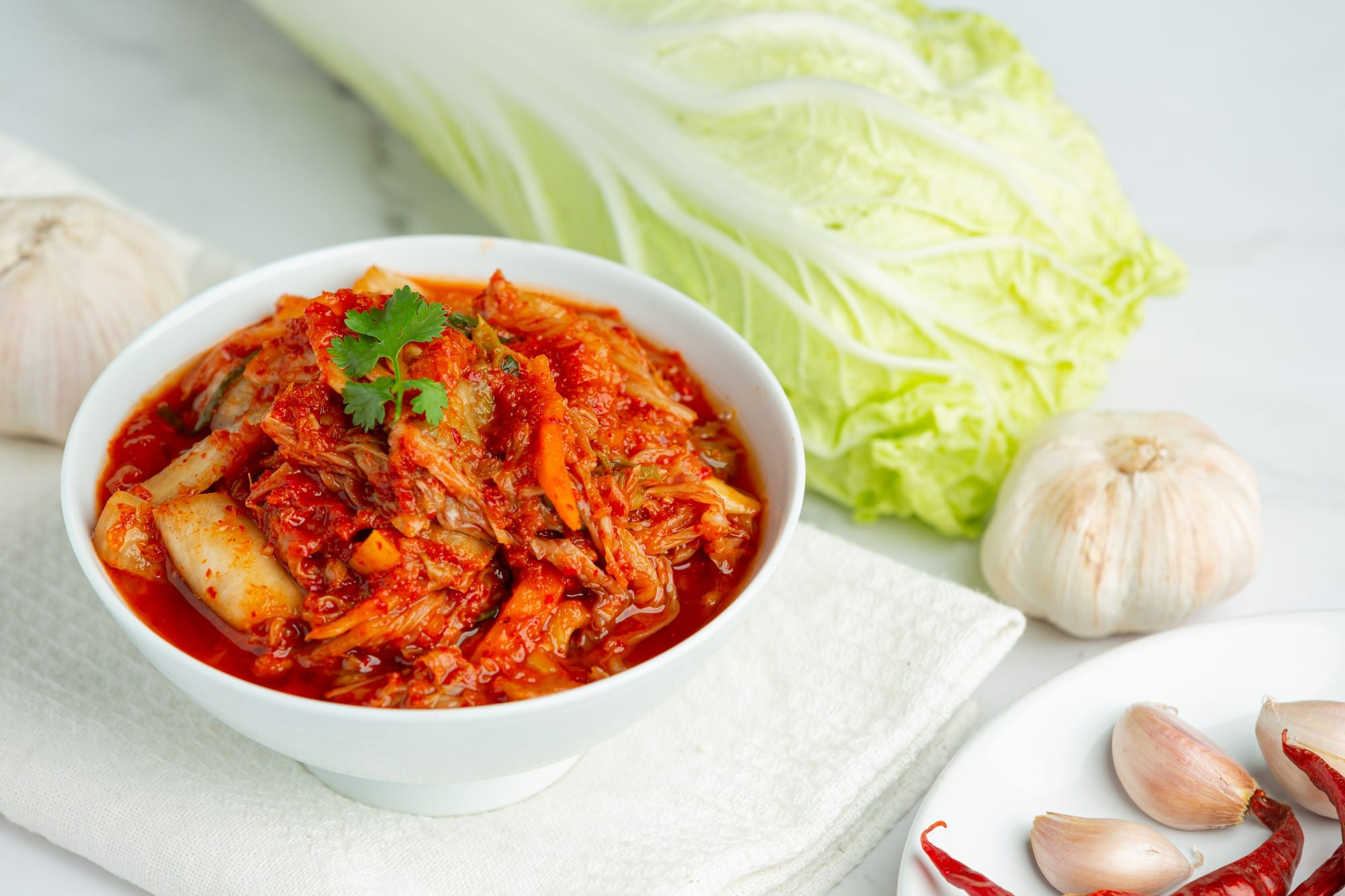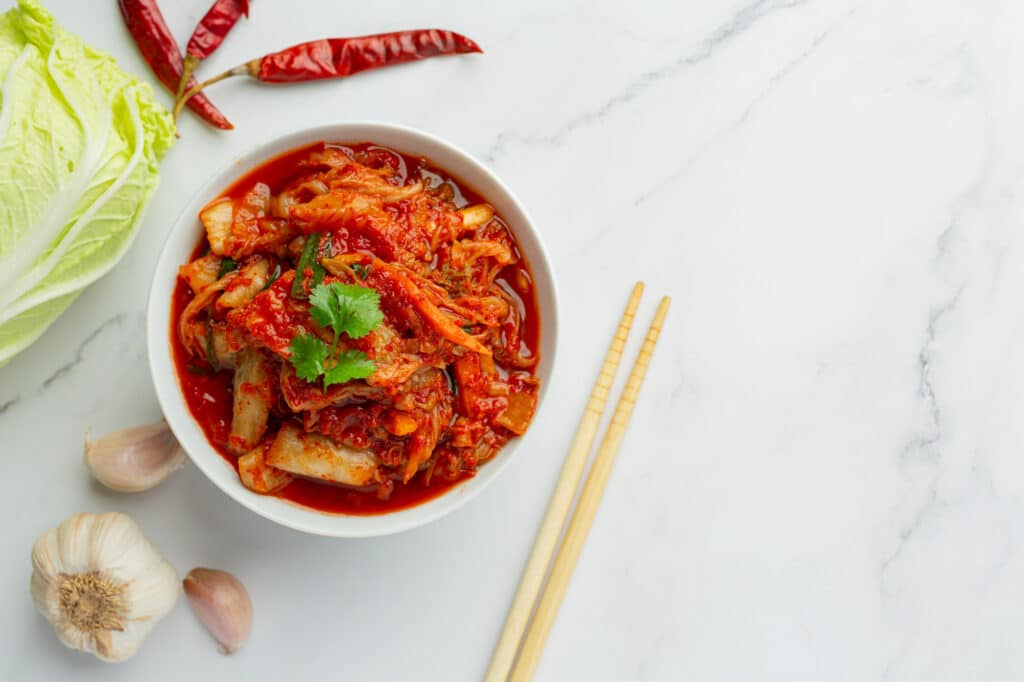Korean Kimchi is not just a recipe. It is a Korean food heritage with a distinctive blend of spicy, salty, and sour flavors. Kimchi has been a staple in Korean households for generations and every family has their own kimchi recipe and taste. Today, we are going to explore the exciting process of making Kimchi that transforms simple vegetables into Korean treasured tradition.
The History of Korean Kimchi
Kimchi, the Korean cuisine, has a backstory that is as colorful as its flavors. Back over 2,000 years, to around 37 BCE in ancient Korea, Ingenious folks were concocting ways to keep their veggies fresh during the icy winters. So the story of kimchi kicks off, with a simple pickling technique.
However, in the fast forward to the 16th century, red chili peppers made their grand entrance. These chilies have transformed kimchi into the spicy sensation we now adore. From beginning, kimchi has developed into a global culinary superstar that do not only boasts history but also a taste that is globally savored.
Key Ingredients Of Kimchi
Well, the key ingredients of Kimchi can vary depending on the preference and region. The art of making kimchi lies not just in the ingredients but how they are combined, fermented, and aged. It’s a culinary tradition that offers room for creativity while maintaining its class and taste. Here is the list of Key ingredients of Kimchi:
Napa cabbage is also known as Chinese cabbage. It is the primary vegetable used in traditional recipe and has tender, crisp leaves. These leaves soak up the flavors of the seasonings during fermentation.
-
Radish (Daikon)
The radish is Often used in addition to or in place of cabbage. Daikon radish adds a refreshing crunch to recipe. It’s typically sliced into thin matchsticks or cubes.

Salt is used to brine the vegetables, drawing out moisture and creating the right environment for fermentation.
Kimchi is famous for its spicy kick, which comes from red pepper flakes or gochutgaru. Garlic, ginger, and scallions are common seasonings. The mixture of herbs adds depth and aroma to Mangchi kimchi.
-
Fish Sauce Or Salted Seafood
Korean Kimchi often includes a seafood element, such as fish sauce, shrimp paste, or salted anchovies. These provide a savory umami flavor and contribute to the fermentation process. For those seeking plant-based options, this dish can be made without fish sauce or seafood, using alternatives like soy sauce or miso.
-
Sugar
A touch of sweetness balances out the heat and saltiness.
-
Water
Some recipes call for a bit of water to help create the paste and distribute the herbs evenly.
-
Fresh Vegetables
Onions and carrots can be added for extra flavor and color.
-
Sesame Seeds
Sprinkle Sesame seeds on top for added texture and nutty flavor.
Varieties of Kimchi

Kimchi has diverse flavors and textures, with a variety to suit every plate and season. Just like a symphony with different instruments, each type of kimchi offers its unique melody. Here’s a glimpse into the colorful array of kimchi varieties:
-
Baechu (Napa Cabbage Kimchi)
This is the most iconic and widely known type of kimchi. You have to coat Napa cabbage leaves with a spicy seasoning paste. Then ferment them to create a crunchy and tangy delight. You can enjoy it as a side dish or use in dishes like kimchi fried rice.
-
Kkakdugi (Radish Kimchi)
In this variation, daikon radishes are cubed and mixed with the flavorful kimchi paste. The result is a refreshing, crunchy kimchi with a mild spiciness.
-
Oi Sobagi Or Cucumber Kimchi
Cucumber kimchi features crisp cucumbers stuffed with spicy seasonings. It’s a cooling and refreshing recipe, perfect for hot summer days.
-
Gat (Mustard Leaf Kimchi)
This recipe uses Korean mustard greens, which have a robust, peppery flavour. You have to coat the leaves with the kimchi paste and ferment it, offering a unique and pungent taste.
-
Geotjeori (Fresh Kimchi)
Unlike traditional recipe, you do not ferment geotjeori for an extended period. It’s made to be consumed shortly after preparation, retaining the fresh, crisp texture of the vegetables and a milder spice level.
-
Baek (White Kimchi)
As the name suggests, you make this kimchi without red pepper flakes that result in a milder, slightly sweet flavor. It’s an excellent choice for those who prefer a less spicy food option.
-
Nabak (Water Kimchi)
It is made with water-based brine instead of the traditional red pepper paste. It’s often served in the summertime as a refreshing, mildly spicy side dish.
-
Chonggak Or Bachelor Radish Kimchi
These small, crunchy radishes are often served whole, with their leafy greens still attached. They are typically less spicy and offer a delightful mix of textures.
-
Mat Or Cut Kimchi
This features ingredients cut into smaller, bite-size pieces. It is easier to enjoy as a side dish or ingredient in various recipes.
-
Bossam Kimchi
It complements bossam, a Korean pork dish. This kimchi features slightly larger, uncut Napa cabbage leaves with a milder flavor profile.

Recipe of Korean Kimchi
The art of making kimchi from its tradition that blends together with fresh ingredients. A touch of herbs creates a symphony of flavors. Here’s a step-by-step guide to the kimchi-making process:
Ingredients
Prepare your vegetables (Napa cabbage, radish, cucumber, etc.), salt, seasonings (red pepper flakes, garlic, ginger, scallions, fish sauce or salted seafood, sugar), and any additional flavourings like carrots or onions.
Equipment
- Large mixing bowl
- Kitchen gloves (if handling spicy seasonings)
- Knife,
- Cutting board, and
- Airtight fermentation containers (glass jars or plastic containers work well).
Preparing the Vegetables
- Cut the Napa cabbage in half lengthwise and then into bite-sized pieces. Rub salt between the leaves to draw out moisture. Rinse and drain after 1-2 hours.
- Prepare them according to your recipe. Daikon radish is often cut into thin matchsticks or cubes.
Creating the Seasoning Paste

In a large mixing bowl, combine the red pepper flakes, minced garlic, grated ginger, chopped scallions, fish sauce or salted seafood, and sugar. Adjust the quantities to achieve the desired spice level and flavor.
Wear kitchen gloves to protect your hands from spicy herbs. Gently massage the seasoning paste into the prepared vegetables and make sure they are well-coated. Add any extra flavorings like carrots or onions at this stage.
Packing and Fermentation
Pack the seasoned vegetables tightly into your fermentation containers. Tightly Press down to remove air bubbles. Leave some space at the top to allow for expansion during fermentation. Seal the containers with lids. Keep them at room temperature for the initial fermentation, typically 1-2 days. Afterward, store them in the refrigerator to slow down the fermentation process. The longer you ferment, the more complex the flavors become.
Check the containers daily during the initial fermentation stage. You will see bubbles and notice it is becoming more pungent. Burp the containers if necessary to release excess gas. After a few days or when it reaches your desired level of fermentation, transfer it to the refrigerator to halt the process. Kimchi can be enjoyed immediately or aged for several weeks, developing deeper flavors over time.
In conclusion, Kimchi is known world wide for its unique and healthy taste. Through the careful selection of ingredients, quantity and blending is a hard task. So follow the instructions and enjoy this recipe.
FAQs
How long does kimchi last?
Kimchi can last for several months when stored in the refrigerator. Its flavor may change over time, becoming more tangy and complex.
Does kimchi have vegetarian or vegan options?
Yes, you can make vegetarian or vegan recipe by omitting fish sauce or seafood and using alternatives like soy sauce or miso.


